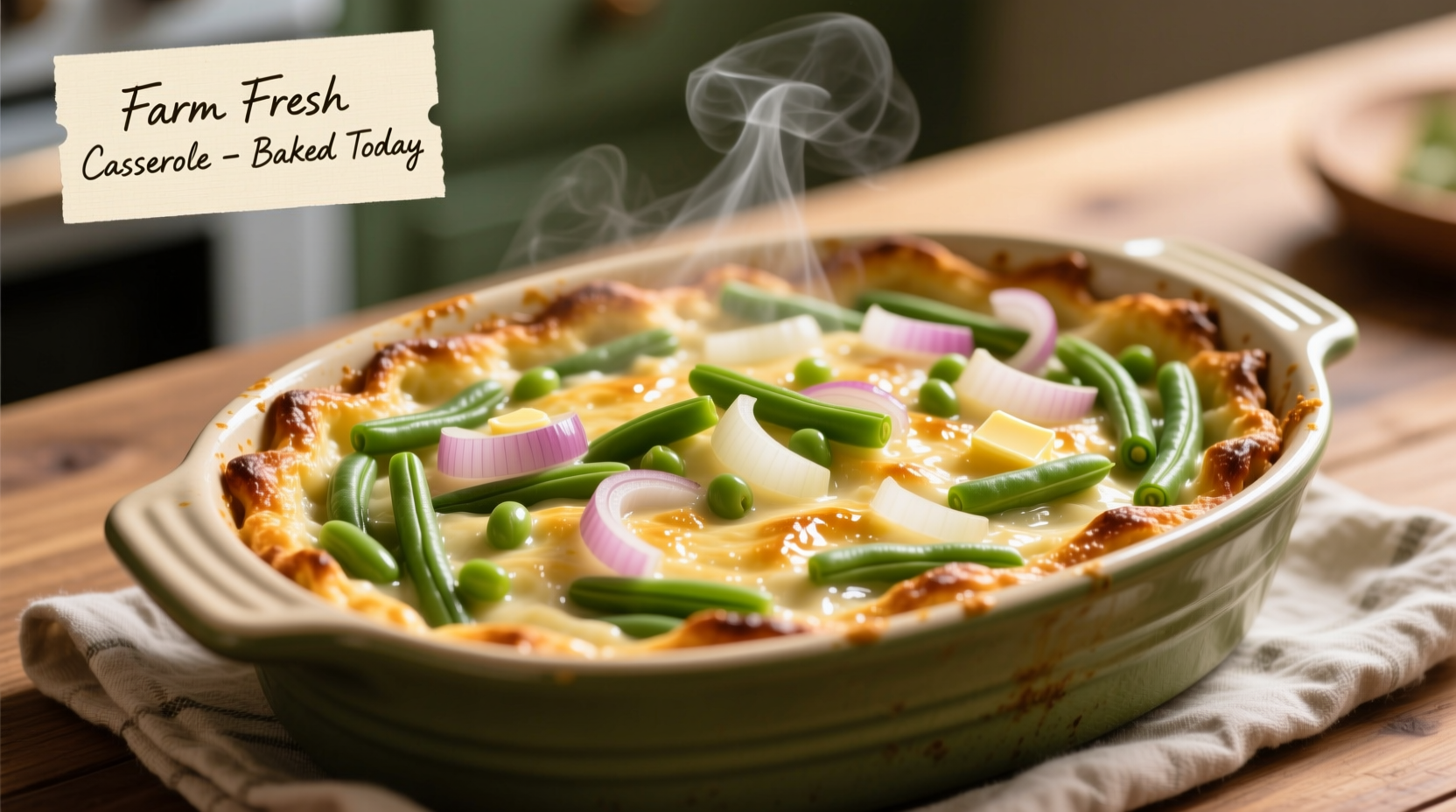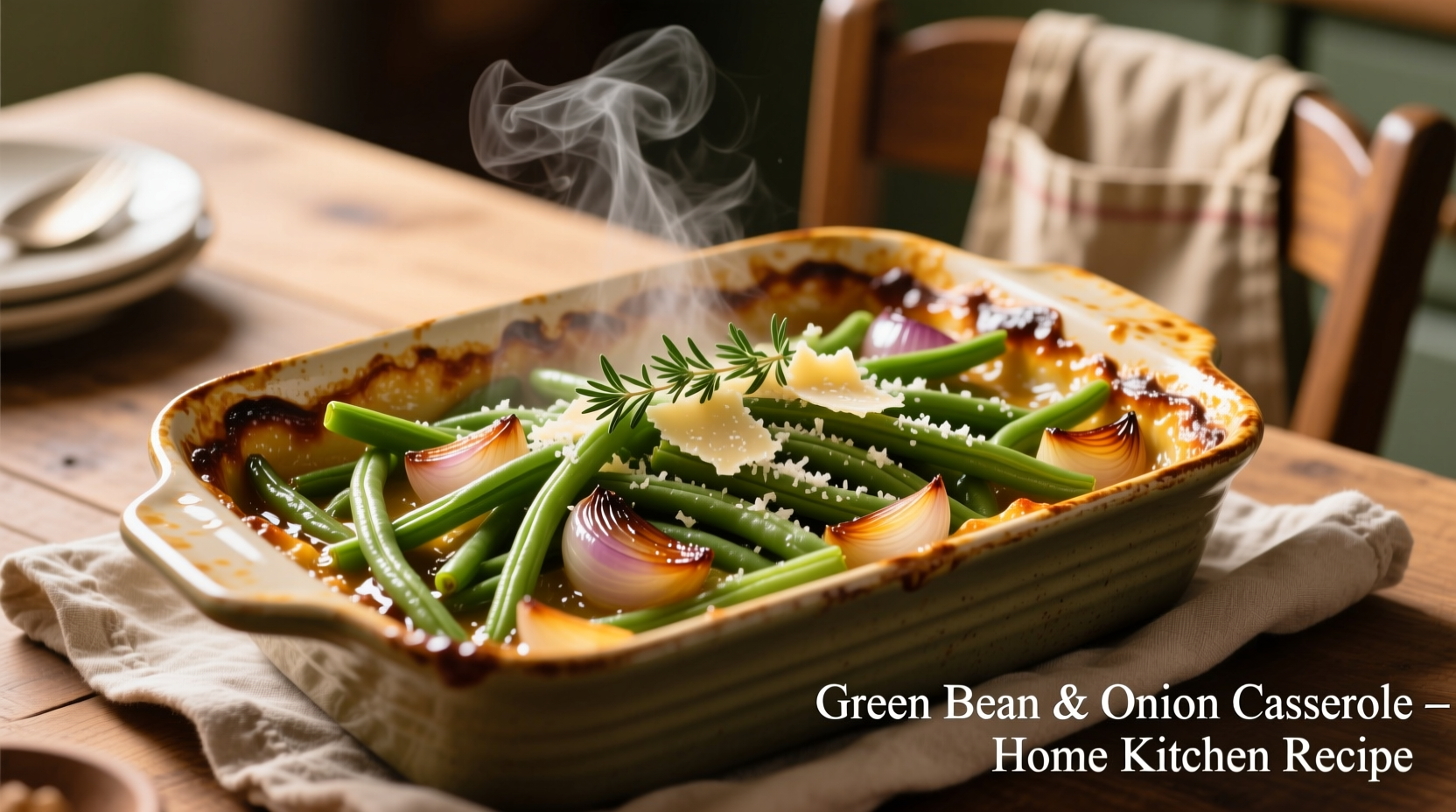Green bean and onion casserole is a classic American side dish featuring tender green beans baked with caramelized onions and a crispy topping, traditionally made with canned soup but elevated with fresh ingredients for superior flavor and texture.
The Ultimate Guide to Perfect Green Bean and Onion Casserole
Nothing says comfort food quite like a perfectly executed green bean and onion casserole. This beloved side dish transforms simple ingredients into a creamy, crunchy masterpiece that elevates any meal from ordinary to extraordinary. Whether you're preparing for a holiday feast or a weeknight dinner, this guide delivers everything you need to create the best version of this American classic.
Why This Recipe Works Every Time
Unlike traditional recipes relying solely on canned soup, this method combines fresh ingredients with smart technique to deliver superior flavor and texture. The secret lies in properly caramelizing the onions to develop deep umami notes while maintaining the green beans' vibrant color and slight crunch. Our tested ratio of creamy sauce to crispy topping ensures every bite has the perfect balance that makes this homestyle casserole unforgettable.
Green Bean Casserole: A Culinary Timeline
Understanding the history of green bean and onion casserole helps appreciate why certain techniques work best. This dish evolved through several key phases:
| Time Period | Key Development | Impact on Modern Preparation |
|---|---|---|
| 1955 | Campbell's Soup Company creates the original recipe using condensed cream of mushroom soup | Established the creamy base concept but limited flavor complexity |
| 1970s-1980s | Home cooks begin adding fried onions for texture contrast | Created the signature crispy topping element |
| 1990s-2000s | Chefs experiment with fresh mushrooms and homemade sauces | Highlighted the importance of building layered flavors |
| Present Day | Modern interpretations focus on caramelized onions and fresh green beans | Superior texture and deeper flavor profiles than traditional versions |
This evolution shows why simply substituting ingredients isn't enough—understanding the science behind caramelization and proper green bean preparation creates dramatically better results than following outdated methods.
Ingredient Selection: Quality Matters
The difference between good and great green bean and onion casserole starts with ingredient selection:
- Green beans: Choose fresh, firm beans with vibrant color. Avoid limp or yellowing beans which indicate age. Haricots verts offer a more delicate texture but standard green beans provide better structure for baking.
- Onions: Yellow onions provide the best balance of sweetness and pungency for caramelization. Look for firm, heavy-for-their-size bulbs with dry, papery skins.
- Mushrooms: Cremini mushrooms deliver deeper flavor than button mushrooms. For maximum umami, add 1-2 dried porcini mushrooms soaked in warm water.
- Crunchy topping: Make your own fried onions by thinly slicing yellow onions, coating in seasoned flour, and frying until golden. This beats store-bought versions every time.

Step-by-Step Preparation Guide
Follow these professional techniques for flawless results:
- Blanch green beans: Cook in salted boiling water for 3-4 minutes, then immediately plunge into ice water. This preserves vibrant color and perfect texture.
- Caramelize onions slowly: Cook sliced onions over medium-low heat for 25-30 minutes until deeply golden brown. Rushing this step creates bitter onions instead of sweet, complex flavor.
- Build the sauce: Sauté mushrooms until browned, then create a roux with butter and flour before adding warm broth gradually. Finish with cream and seasonings.
- Combine carefully: Gently fold blanched beans into the sauce to maintain their shape and texture.
- Bake properly: Cover for first 20 minutes to heat through, then uncover and add crispy topping for final 10 minutes until golden and bubbling.
Avoid These Common Mistakes
Even experienced cooks make these critical errors when preparing green bean and onion casserole:
- Overcooking green beans: Results in mushy texture. Blanching time should never exceed 4 minutes.
- Rushing onion caramelization: High heat burns onions instead of caramelizing them. Patience is essential for developing complex flavor.
- Using cold liquids in sauce: Causes lumps in the roux. Always use warm broth when making the creamy base.
- Adding all topping before baking: Makes it soggy. Reserve half the crispy onions for the final minutes of baking.
Variations for Every Dietary Need
Adapt this classic recipe to accommodate various preferences without sacrificing flavor:
- Gluten-free: Substitute rice flour for wheat flour in the roux and use gluten-free breadcrumbs in the topping.
- Dairy-free: Replace cream with full-fat coconut milk and use olive oil instead of butter.
- Vegan: Combine dairy-free and gluten-free modifications with mushroom broth for maximum umami.
- Lower calorie: Reduce cream amount by half and increase vegetable broth, using Greek yogurt for creaminess.
Serving and Storage Tips
Maximize your green bean and onion casserole experience with these professional recommendations:
- Let the casserole rest for 10-15 minutes after baking for cleaner slices and better texture
- Pair with roasted meats like turkey, chicken, or pork for balanced meals
- Store leftovers in airtight containers for up to 3 days in the refrigerator
- Reheat in the oven at 325°F (165°C) covered with foil to maintain moisture
- Freeze portions for up to 2 months; thaw overnight before reheating











 浙公网安备
33010002000092号
浙公网安备
33010002000092号 浙B2-20120091-4
浙B2-20120091-4